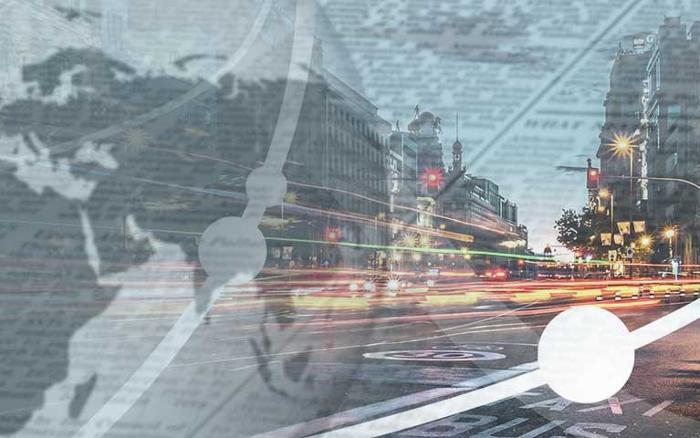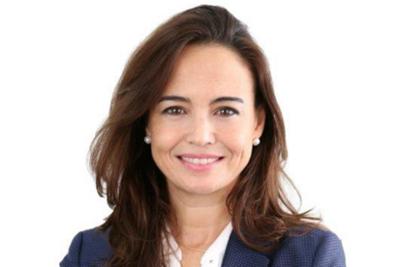

Interview with Berta Barrero, General Manager of Mobility at Indra
From Indra, we promote sustainable, collaborative, safe and efficient mobility through solutions that incorporate the latest digital technologies to move towards a global mobility management model, with a transversal and multimodal vision.
1.- What opportunities does Global Mobility Call offer Indra in terms of its mobility activity?
This forum offers us the opportunity to show that technology is key to achieving more sustainable and connected mobility.
At Indra, as a leading global company in technological engineering, our mission is to contribute to developing the new mobility model that has come to light following the COVID-19 pandemic. Mobility that places its focus squarely on the people and around which infrastructure and service offerings must be realigned. Mobility that's safer, more accessible, efficient, resilient and cleaner.
2.- What role does smart technology play in promoting sustainable mobility?
The mobility sector is at a critical juncture in terms of accelerating its digital and cultural transformation. A need and urgency that, without a doubt, has increased in light of the impact of the COVID-19 pandemic.
In this profound transformation, technology serves as a key driver to making the sustainable mobility paradigm a reality.
From our perspective, achieving true sustainable mobility requires, among other things, a new, comprehensive and global model for planning and management that integrates and arranges all types and methods of transport, traffic data and infrastructure management. This model must include instantaneous data sharing and more efficient systems integration, ensuring improved day-to-day mobility for passengers and goods.
At Indra, as the world's most sustainable company in the technology sector according to the Dow Jones Sustainability Index (DJSI), we are driving mobility that is more sustainable, collaborative, safe and efficient. This is done thanks to solutions that incorporate cutting-edge digital technologies based on intelligent, automated and autonomous systems in order to use our transversal and multimodal vision to move towards a global mobility management model.
Our mission as expert technologists in infrastructure and transport systems is to use our solutions to contribute to promoting a new mobility, based on innovation and projects developed with our clients, which in turn overcomes the sustainability challenges that our society is currently facing.
3.- What are some examples of how this technology is changing the mobility model?
A platform of platforms, such as our In-Mova Space platform, enables integration of data and traffic management, public transportation, infrastructures and logistics, providing intelligence for global management. This ensuring a more efficient modal layout, maximising the capacity of infrastructures, adjusting supply to real-time demand and improving services provided to citizens.
More specifically, some of Indra's solutions and experiences that are already contributing towards transforming mobility include: advanced account-based ticketing systems, developed for the Riyadh public transport network, which are more agile and comfortable for citizens; solutions for paying for infrastructure use according to traffic, vehicle occupants or pollution, such as those deployed in the United States; operating systems and eco-driving solutions to improve efficiency in public transportation; collaborative platforms, such as the Simple project for exchanging data across the entire supply chain in Spain; the application of Blockchain to ensure the security and traceability of transactions in multi-operator mobility management; and solutions for connected and autonomous vehicles, which have made us pioneers in Europe.
4.- What are some of the main challenges in designing mobility that is more sustainable, efficient and safe?
Mobility needs to have a hand in developing greener cities that are more liveable for inhabitants, while also being charged with drastically reducing emissions from transport, and promoting new and cleaner flows—with public transport taking centre stage—for passenger transportation and as well as a firm commitment to multimodality in goods transport. Mobility must be an effective means of achieving the United Nations’ Sustainable Development Goals.
Moreover, there is a cultural shift that needs to occur in the sector, public administrations, operators and the industry, in order to facilitate data sharing and better data integration into systems. The aim is to achieve greater efficiency when managing public resources and better information for travellers, thereby facilitating greater accessibility and flexibility in their travel options.
Likewise, technological disruption necessitates accelerated transformation and technification of talent so that it can adapt to the new management and operation business models that are being integrated.
On the other hand, transport infrastructures have a finite capacity and public resources are also limited; once again, both technology and autonomous and smart systems are key to optimising, planning and operating different means of transport in a safe, efficient and sustainable manner.
5.- How does Indra see this mobility development in Spain compared to other countries and in an international context in general?
The most significant challenges in the immediate future of the transport industry and its infrastructure must be backed by transformative and bold legislative change.
In Spain, the Law on Sustainable Mobility, launched by the Ministry for Transport, Mobility and Urban Agenda (Ministerio de Transportes, Movilidad y Agenda Urbana), should not be overlooked in terms of making Spain an international benchmark thanks to its innovative and transversal spirit. It sets the groundwork for more efficient, integrated and collaborative planning and management of public resources and services, and is within the framework of a financing model that is also more efficient and enables us to confront the challenges of sustainability and digitization in which the entire sector finds itself.
In an international context, the challenges involved in developing the new mobility paradigm are quite similar across all countries, although the way they are confronted differs depending on the maturity of the public transportation systems and infrastructure development in each country. In this regard, Spain boasts an excellent network of transport infrastructure and mature public transportation systems. While our country is facing the challenge and urgency of the technological renovation of many of its systems and technologies, on the other hand, this should serve to speed up the transformation process.
At Indra, as technological experts and thanks to our capacity for innovation, knowledge and experience in the sector, we are prepared and excited to collaborate and drive this process of incorporating new technologies into the new realities and needs of managing and operating services and infrastructures, as well as improving the traveller experience.
As a Spanish company, we would be remiss if we didn’t emphasise how important it is to know how to take advantage of this moment of transformation and technological development — an opportunity to generate added value in our country by creating awareness and developing of Spanish products and technology so that it can serve as a benchmark for the rest of the international community.
Today, Indra’s solutions help to manage the daily transportation needs of 78 million people and, annually, prevents 10 tonnes of CO2 from being emitted, saves around 3,000 lives and represents a savings of more than EUR 6 billion for society. These credentials serve to make us a leader in the sector and allow us to guide our public and private clients with trustworthiness and commitment.
6.- One of the objectives of Global Mobility Call is to consolidate the mobility ecosystem in Spain and Europe. What do you think is necessary or what steps must be taken to achieve this?
The European Union’s guidelines, regulations and standards on mobility allow us to set out a roadmap that member states must follow to achieve this global ecosystem, where all countries move in the same direction.
At the same time, major European programmes and projects—such as the recently inaugurated SESAR 3 in the aviation sector, and Shift2Rail 2 in the rail sector, in which Indra has a prominent position as a member of their highest governing bodies—facilitate collaboration between various sector stakeholders on an international level in order to advance new solutions that make the challenges of more connected, efficient, safe and sustainable mobility a reality.
Likewise, international associations that foster both the key role of public transportation and innovation, alongside specialised international forums like Global Mobility Call—which promote the coming together of different agents in the mobility sector and help to develop an open and collaborative spirit of knowledge, experiences, solutions and challenges—are, without a doubt, necessary to advancing more quickly towards achieving common goals.
7.- In your view, what opportunities do Next Generation EU funds and Spain's Plan for Recovery, Transformation and Resilience offer for developing sustainable mobility?
Satellite networks, 5G communication, automation, artificial intelligence, Big Data, biometric recognition, NFC and EMV card payment technologies and autonomous vehicles are all a reality today. And at Indra, we have the solutions that allow them to be applied to respond to current challenges in the transport sector and its infrastructure.
The technology is already ready to respond to the sector’s new challenges in digitalisation, innovation and sustainability. Next Generation EU funds and Spain's Plan for Recovery, Transformation and Resilience are a unique opportunity to promote public-private collaboration and finance initiatives that are truly transformative in the long term.





